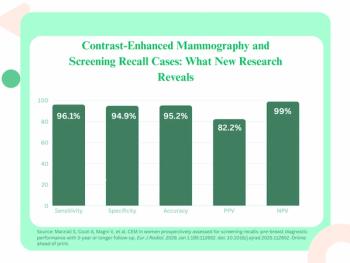Researchers Unveil PI-QUAL v2 for Prostate MRI Quality Assessments
Developed by an extended prostate cancer working group of the European Society of Urogenital Radiology (ESUR), the updated PI-QUAL scoring system emphasizes a simplified scale of image parameters that applies to prostate MRI scans with and without intravenous contrast use.
In light of persistent variability with the quality of prostate magnetic resonance imaging (MRI), the European Society of Urogenital Radiology (ESUR) has published an updated version of the prostate imaging quality scoring system with PI-QUAL v2.
Here are nine pertinent takeaways from the updated PI-QUAL v2 scoring system, which was recently published in
1) One of the key changes with PI-QUAL v2 is the incorporation of quality scoring for prostate MRI images obtained without intravenous contrast. Full scores of 4 for T2-weighted (T2-WI) and diffusion-weighted MRI (DWI-MRI) indicate a PI-QUAL score of 3 for an optimal scan, according to the authors. The developers of PI-QUAL v2 noted that scores of 3 or 4 indicate an acceptable scan or a PI-QUAL score of 2. A PI-QUAL score of 1 is assigned to T2-WI or DWI-MRI scores of less than or equal to 2, which is correlated to a PI-QUAL score of 1 for an inadequate scan.
2) For T2-WI scans, the authors of PI-QUAL v2 emphasized a 3 mm slice thickness and axial views devoid of significant artefacts with clear delineation of relevant prostate structures and an adequate signal-to-noise ratio (SNR). Additionally, sagittal or coronal views must demonstrate adequate resolution, SNR and no significant artefacts, according to the researchers.
3) The PI-QUAL v2 system offers two separate criteria for dynamic contrast-enhanced (DCE) MRI but emphasizes four-point scoring for T2-WI and DWI scans.
“This aligns with the lesser role of DCE in the PI-RADS v2.1 scoring system, where it is primarily used to upgrade PI-RADS 3 to PI-RADS 4 lesions in the peripheral zone, with no role in the transition zone for category assignment of detected lesions,” noted lead author Maarten de Rooij, M.D., Ph.D., who is affiliated with the Department of Medical Imaging at the Radboud University Medical Center in Nijmegen, the Netherlands, and colleagues.
4) In order to achieve acceptable quality for multiparametric MRI (mpMRI), the PI-QUAL v2 system requires a minimum of 3/4 score ratings for T2-WI and DWI-MRI sequences.
“This score cannot be upgraded or downgraded by DCE sequences,” maintained de Rooij and colleagues.
5) While endorectal coils may improve SNR in scans obtained with 1.5T MRI scanners and in cases involving patients with large body mass index (BMI), the PI-QUAL v2 authors noted meta-analysis findings showing a lack of improvement for diagnosing extraprostatic extension and seminal vesicle invasion.
6) Essential requirements for quality DWI-MRI imaging include slice thickness < 4 mm, a b value sequence > 1,400 s/mm2, and an apparent diffusion coefficient (ADC) map that has two b values up to 1,000 s/mm2, according to the PI-QUAL v2 authors.
7) For mpMRI, de Rooij and colleagues noted there must be a combination of 4/4 scores for T2-WI and DWI-MRI, and satisfaction of both criteria for DCE sequences to achieve a PI-QUAL 3 score.
(Editor's note: For additional related content on prostate cancer imaging, click
8) When ascertaining prostate MRI quality, the PI-QUAL v2 authors emphasized simultaneous assessment of all images relevant to the prostate gland.
9) In the assessment of prostate MRI quality for post-treatment monitoring or those on active surveillance, achieving PI-QUAL 3 scores is essential for determining the presence of clinically significant prostate cancer (csPCa), according to the PI-QUAL v2 authors.
“By introducing PI-QUAL v2, we aim to further enhance the (standardization) and reliability of prostate MRI quality assessment, thereby (optimizing) the diagnostic accuracy and subsequent management of patients with known or suspected prostate cancer,” added de Rooij and colleagues.
In regard to possible limitations with the PI-QUAL v2 system, the authors conceded that inter- and intra-reader variability remains possible due to the subjective nature of image quality assessment and different experience levels of those interpreting the images.
Newsletter
Stay at the forefront of radiology with the Diagnostic Imaging newsletter, delivering the latest news, clinical insights, and imaging advancements for today’s radiologists.





























